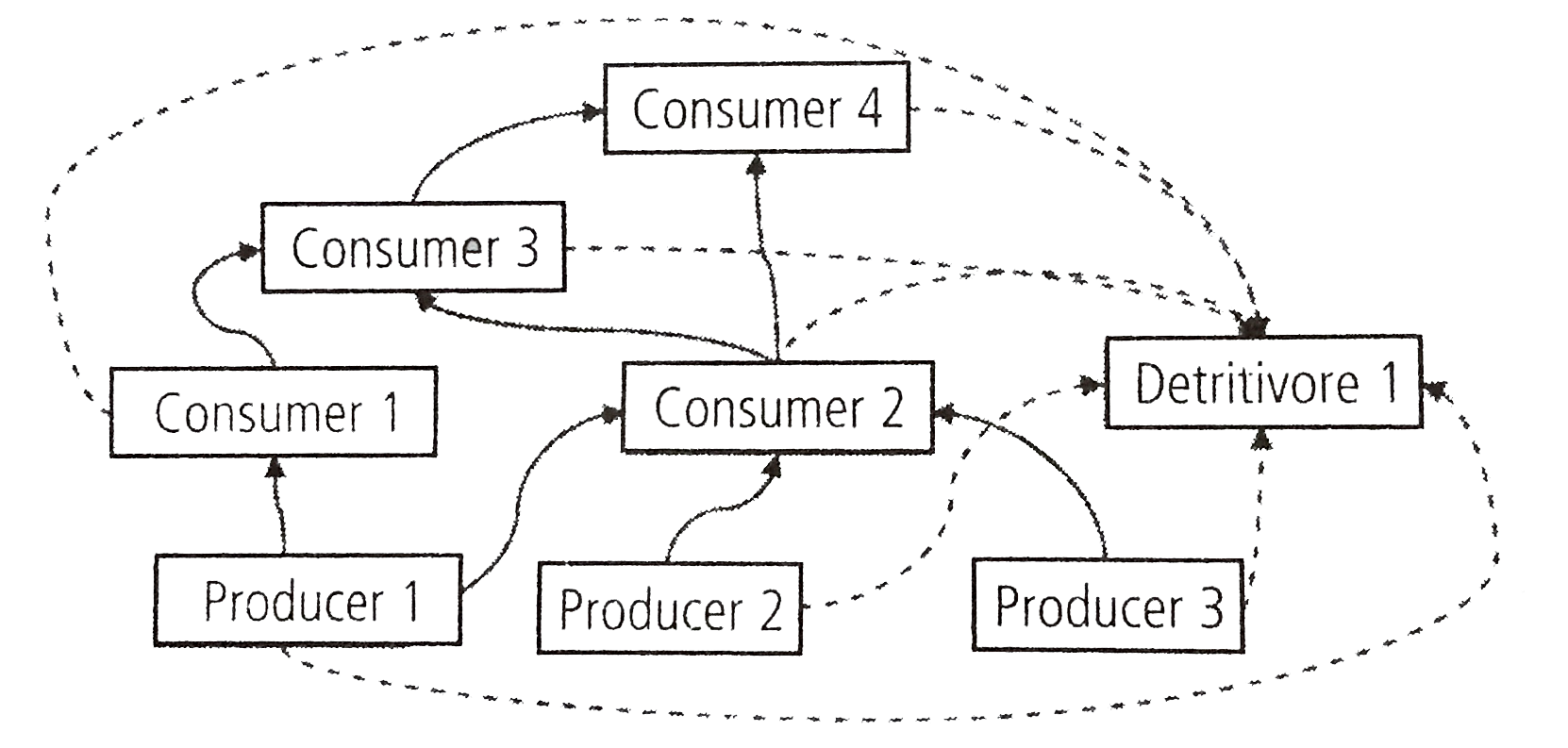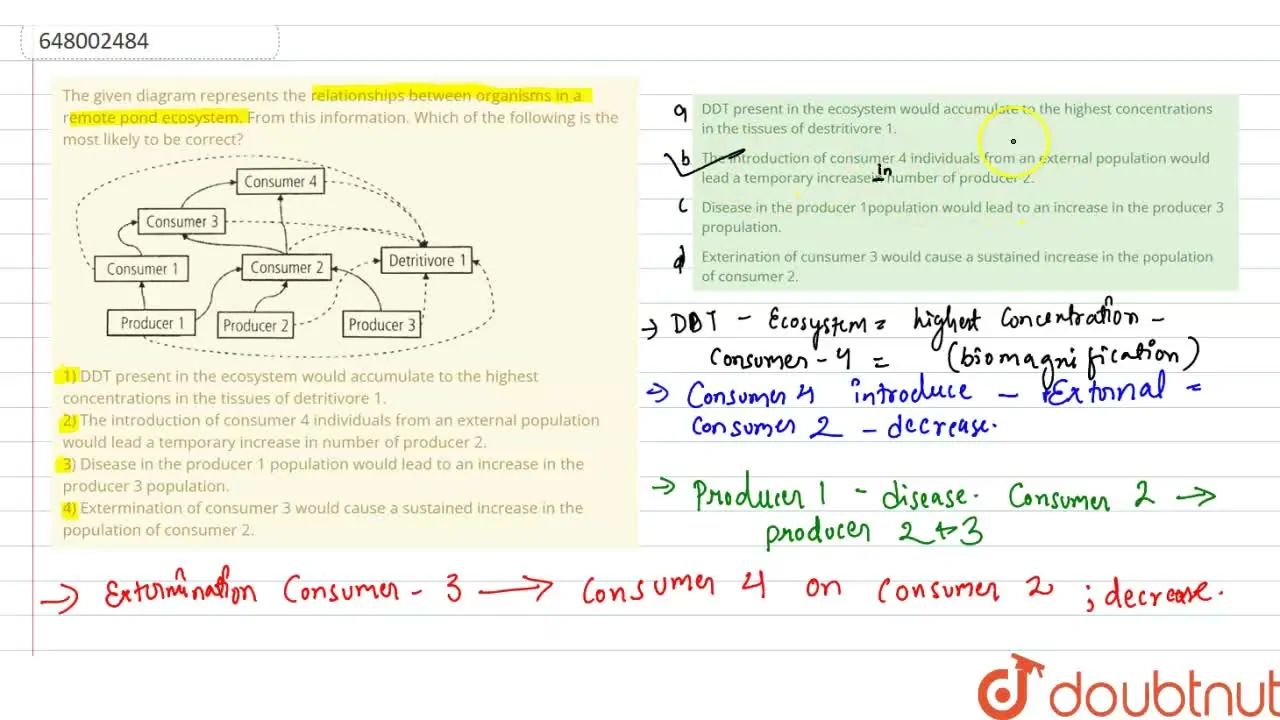The given diagram represents the relationships between organisms in a remote pond ecosystem. From this information. Which of the following is the most likely to be correct?

1) DDT present in the ecosystem would accumulate to the highest concentrations in the tissues of detritivore 1.
2) The introduction of consumer 4 individuals from an external population would lead a temporary increase in number of producer 2.
3) Disease in the producer 1 population would lead to an increase in the producer 3 population.
4) Extermination of consumer 3 would cause a sustained increase in the population of consumer 2. Solution in Odia
DDT present in the ecosystem would accumulate to the highest concentrations in the tissues of destritivore 1.
The introduction of consumer 4 individuals from an external population would lead a temporary increasein number of producer 2.
Disease in the producer 1population would lead to an increase in the producer 3 propulation.
Exterination of cunsumer 3 would cause a sustained increase in the population of consumer 2.
The correct Answer is:B
DDT present in ecosystem would accumulate to the highest concentration in the tissues of consumer 4 due to the phenomenon of biomagnification. If consumer 4 is introduced from an external population it would cause a decrease in consumer 2. This will lead to a temporary increase in producer 2 on which consumer 2 was feeding. If there is disease in the producer 1, consumer 2 will have one less option to eat, so it will be more dependent on producer 2 and 3, hence decreasing their populations. Extermination of consumer 3 would lead to more dependence of consumer 4 on consumer 2, thereby decreasing its number.
Similar Questions
The Primary consumer of pond ecosystem are
02:44View Solution________________ is a primary consumer in pond ecosystem.
02:51View SolutionConsider a pond ecosystem.
a. Draw a pyramid of energy in that ecosystem.
b. Compare three types of pyramidal relationship found among the organisms in pond ecosystem.
c. Is there any difference between nutrient flow and energy flow in an ecosystem ? Substantiate.07:14View Solutionनीचे का चित्र एक रिमोट (दूरवर्ती या दूरस्थ) तालाब पारितंत्र में जीवों के मध्य सम्बन्धों को प्रस्तुत करता है। इस सूचना से निम्न में से कौन-सा कथन सबसे अधिक सही हो सकता है?
 04:09View Solution
04:09View Solutionচিত্র সহযোগে একটি পুকুরের বাস্তুতন্ত্রের সংক্ষিপ্ত পরিচয় দাও।
06:43View SolutionEcosystem||Introduction || Types OF Ecosystem || Components OF Ecosystem || Biotic components Producers and Consumers
01:14:13View SolutionEcosystem Introduction || Types OF ecosystem || Components OF ecosystem || producers and consumers
01:07:10View SolutionIn an aquatic food chain polluted by DDT, the tissue concentration of DDT would be highest in
02:08View Solution


